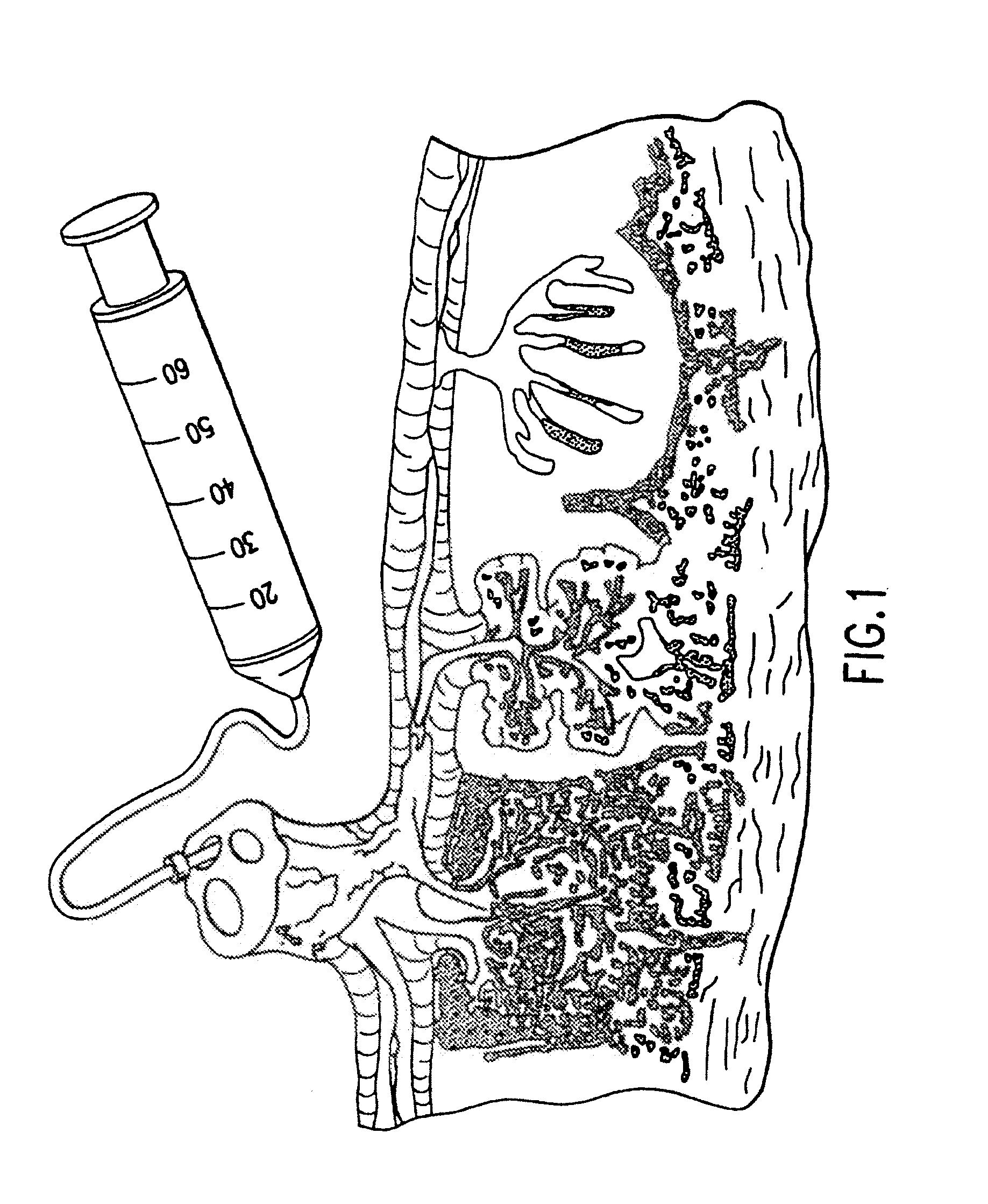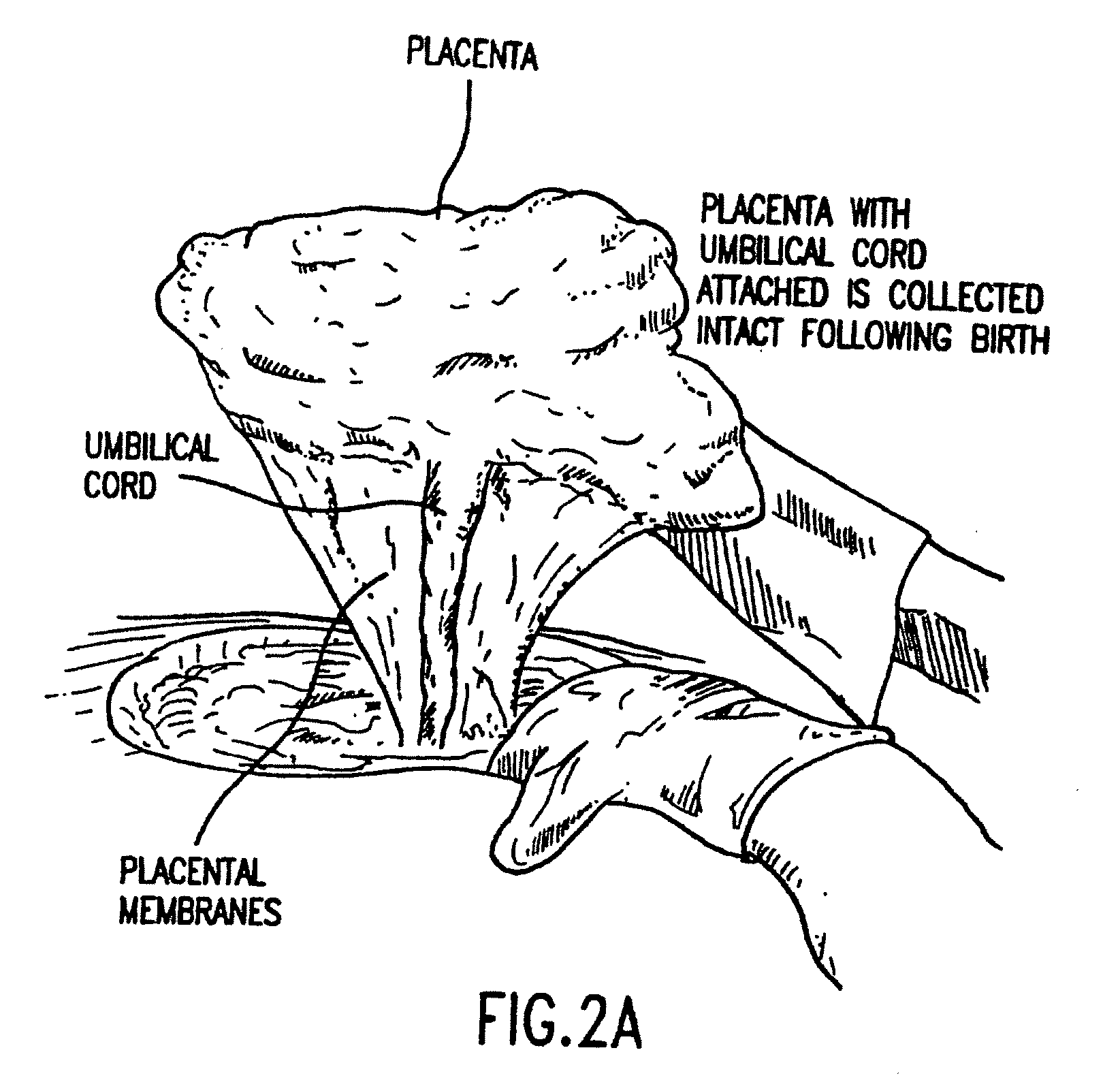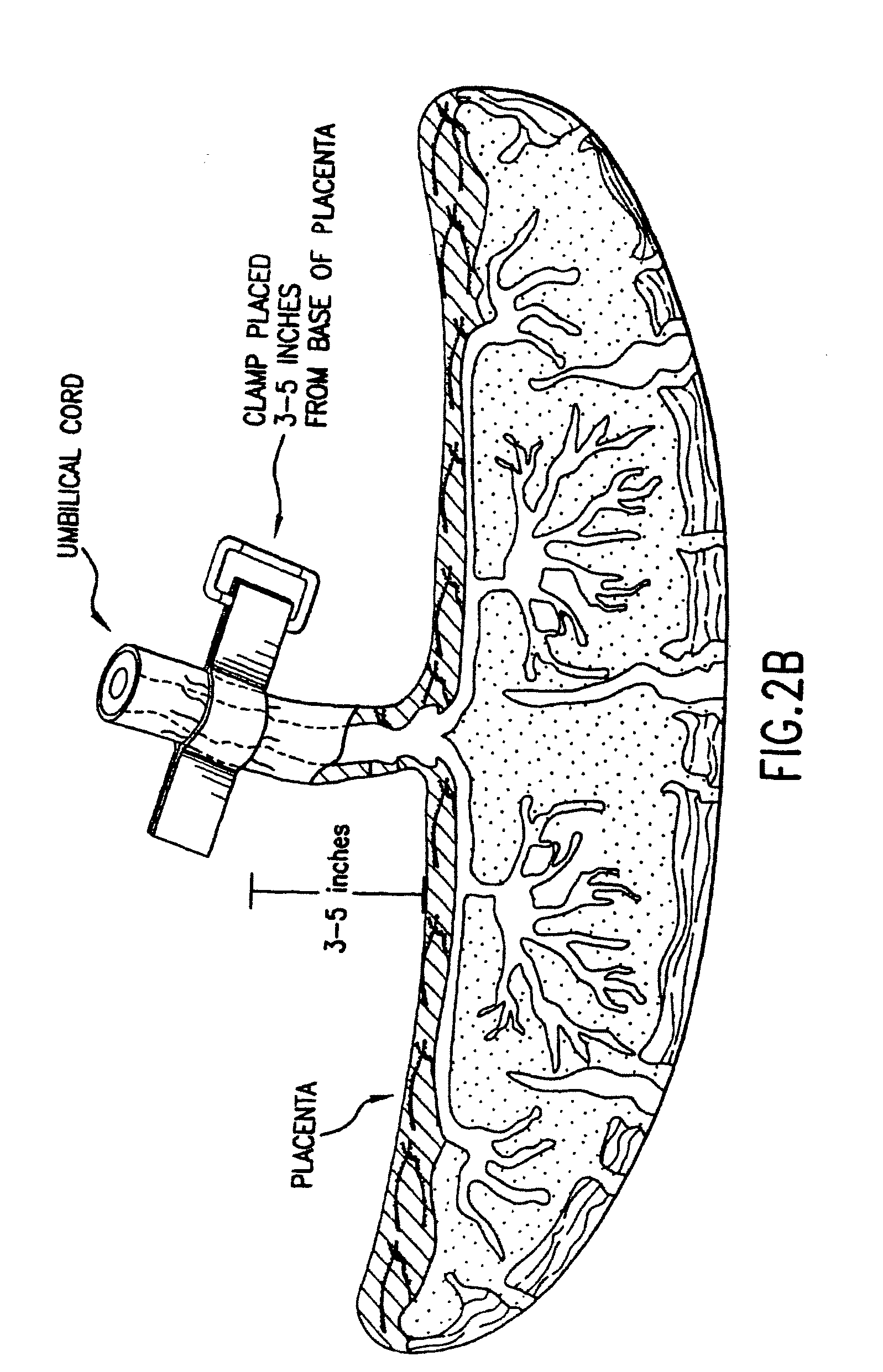Composition for collecting and preserving placental stem cells and methods of using the composition
a technology for placental stem cells and compositions, applied in the field of compositions for collecting and preserving placental stem cells and methods of using the compositions, can solve problems such as apoptosis or necrosis of stem cells, and achieve the effect of facilitating stem cell recovery
- Summary
- Abstract
- Description
- Claims
- Application Information
AI Technical Summary
Benefits of technology
Problems solved by technology
Method used
Image
Examples
example 1
6.1 Example 1
Stem Cell Collection Compositions
[0615]The following Example describes formulations of a stem cell collection composition. Other embodiments will be apparent to one of skill in the art.
[0616]6.1.1 Compositions Comprising an Apoptosis Inhibitor and a Protease
[0617]A perfusion solution is made comprising 0.9% NaCl, caspase inhibitor Ac-Val-Ala-Asp-CHO at a final concentration of 50-100 μM, and trypsin-EDTA at a final concentration of about 0.25%.
[0618]A perfusion solution is made comprising the modified Krebs solution shown in Example 1, caspase inhibitor Ac-Val-Ala-Asp-CHO at a final concentration of 50-100 μM, and trypsin-EDTA at a final concentration of about 0.25%.
[0619]A perfusion solution is made comprising the DMEM-based solution shown in Example 1, caspase inhibitor Ac-Val-Ala-Asp-CHO at a final concentration of 50-100 μM, and trypsin-EDTA at a final concentration of about 0.25%.
[0620]6.1.2 Compositions Comprising a Combination of Apoptosis Inhibitors and a Protea...
example 2
6.2 Example 2
Placental Stem Cell Culture
[0649]Placental stem cells are obtained from a post-partum mammalian placenta either by perfusion or by physical disruption, e.g., enzymatic digestion. The cells are cultured in a culture medium comprising 60% DMEM-LG (Gibco), 40% MCDB-201 (Sigma), 2% fetal calf serum (FCS) (Hyclone Laboratories), 1× insulin-transferrin-selenium (ITS), 1× lenolenic-acid-bovine-serum-albumin (LA-BSA), 10−9M dexamethasone (Sigma), 10−4M ascorbic acid 2-phosphate (Sigma), epidermal growth factor (EGF) 10 ng / ml (R&D Systems), platelet derived-growth factor (PDGF-BB) 10 ng / ml (R&D Systems), and 100 U penicillin / 1000 U streptomycin.
[0650]The culture flask in which the cells are cultured is prepared as follows. T75 flasks are coated with fibronectin (FN), by adding 5 ml PBS containing 5 ng / ml human FN (Sigma F0895) to the flask. The flasks with FN solution are left at 37° C. for 30 min. The FN solution is then removed prior to cell culture. There is no need to dry th...
example 3
6.3 Example 3
Differentiation of Placental Stem Cells
[0660]6.3.1 Induction of Differentiation into Neurons
[0661]Neuronal differentiation of placental stem cells can be accomplished, for example, as follows:[0662]1. Placental stem cells are grown for 24 hr in preinduction medium consisting of DMEM / 20% FBS and 1 mM beta-mercaptoethanol.[0663]2. The preinduction medium is removed and cells are washed with PBS.[0664]3. Neuronal induction medium consisting of DMEM and 1-10 mM betamercaptoethanol is added to the cells. Alternatively, induction media consisting of DMEM / 2% DMSO / 200 μM butylated hydroxyanisole may be used.[0665]4. In certain embodiments, morphologic and molecular changes may occur as early as 60 minutes after exposure to serum-free media and betamercaptoethanol. RT / PCR may be used to assess the expression of e.g., nerve growth factor receptor and neurofilament heavy chain genes.
[0666]6.3.2 Induction of Differentiation into Adipocytes
[0667]Adipogenic differentiation of placent...
PUM
| Property | Measurement | Unit |
|---|---|---|
| concentration | aaaaa | aaaaa |
| concentration | aaaaa | aaaaa |
| concentration | aaaaa | aaaaa |
Abstract
Description
Claims
Application Information
 Login to View More
Login to View More - R&D
- Intellectual Property
- Life Sciences
- Materials
- Tech Scout
- Unparalleled Data Quality
- Higher Quality Content
- 60% Fewer Hallucinations
Browse by: Latest US Patents, China's latest patents, Technical Efficacy Thesaurus, Application Domain, Technology Topic, Popular Technical Reports.
© 2025 PatSnap. All rights reserved.Legal|Privacy policy|Modern Slavery Act Transparency Statement|Sitemap|About US| Contact US: help@patsnap.com



